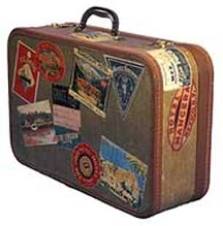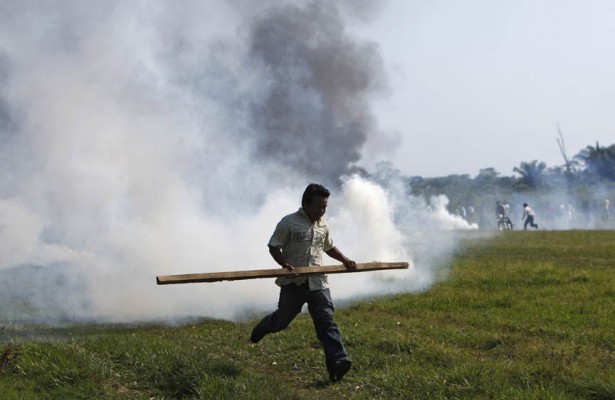Compiled by Working Class Wanderer, Kathryn Mann.
I am catching a mini bus from Mosvingo to Great Zimbabwe, and it appears I should arrive while it is still light. There are 26 of us crammed into space for 16. In an effort to avoid the police and a ticket for too many passengers, our driver takes a few deeply rutted dirt roads that parallel the main highway. Did he pull one over on deputy dog? Not on your life. I am not sure if he paid a fine or if a little back handed bribe was involved, but it did not take long for us to be back on the road.
Now the fun begins. We are dumped off at a junction, where we are told to walk 100 meters to the hostel. This was a ploy to get rid of us. After 1000 meters we see a sign directing us to The Lodge at the Ancient City. Here we discover that the only place to stay in the park, the National Park Accommodations, is “self-catering”. Since we are carrying no food, we eat at the lodge or not at all. We have a hearty meal after which, we start the 2100 meters further to the hostel. Now it is pitch black. By the grace of the heavens we were quickly given a ride in a pick-up. The chances of us finding that hostel on our own were nil. (Bus-Stated distance to hostel-100 meters. Actual distance to hostel-3100 meters.) Soon enough we are settled into one of the most rustic and basic dorms I have ever had the pleasure to call home for a night. At $7 it was a steal.

The Great Zimbabwe
Great Zimbabwe is the largest and most grand medieval city in sub-Saharan Africa. In the monument museum a worker told me that, in an effort to unite people from all over the region, the king took a bride from each tribe. This resulted in some 200 wives. It is not a manicured monument, yet the beauty and mystery were so enticing. After I visited the museum and walked the grounds, my mind was spinning. The monument can be covered in about an hour, but I spent well over three and literally had to pull myself away from Great Zimbabwe.
The next challenge was returning to Masvingo where I would either spend the night or catch a bus to Harare. “What is the quickest way to catch a mini bus?” I get three answers. After conferring I am directed to the “locals” path. When I give them a quizzical look, one fellow says “follow me”. Negotiating this path on my own would have been a recipe for getting lost. Half-way through the hike, he hands me over to a lady who is also waiting for a bus. Two minutes after getting to the highway, a bus with only 14 people arrives. Off we go.
At the bus station, I am told a bus would come by “soon” for Harare. I go to grab a bite to eat and when I returned it was pulling in. By 2:30 PM we were starting the four hour journey to Harare. We arrived around to 8 PM due to frequent police checks. I go on the witness stand, under oath, saying there was one on average of every 75 KM. Some we whisk right though, others involved paperwork, and still others provide a time for drivers to just BS with one another. Any way you slice it, a reasonably short distance of 300 KM becomes a long journey.

An example of Combis. Photo Credit: NewsZimbabwe.com
After I check into the hostel, I head into town for some food. Once on the main road leading to the city I opt to try the local transportation system of combis. (commuter omnibus). After football, I believe the favorite sport of the area is seeing how many people can be crammed into a combi. At 50 cents per ride, it is volume that brings in the money.
Once full, I head to the Zimbabwe National Gallery, the $1.00 entry fee was worth every cent. I saw some very interesting things, and was intrigued by even more that was in rooms roped-off from the public. I coughed up another bill to enter the National Archives of Zimbabwe. Housed in a couple small rooms were entertaining and informative displays about the history of Rhodesia and modern Zimbabwe. I was captivated because I remember when the war for independence started in the mid-sixties. Rhodesia becoming Zimbabwe was a major shift for southern Africa.

The Balancing Rocks
The next day I did more wandering, the highlight being a journey 15km outside the city to Epworth Balancing Rocks. The question is, what forces of erosion allowed these gravity-defying piles of stacked boulders to remain, while surrounded by nothing but rolling plain? Although I am not ready to pack my bag and move to Harare, I very much enjoyed the city.











